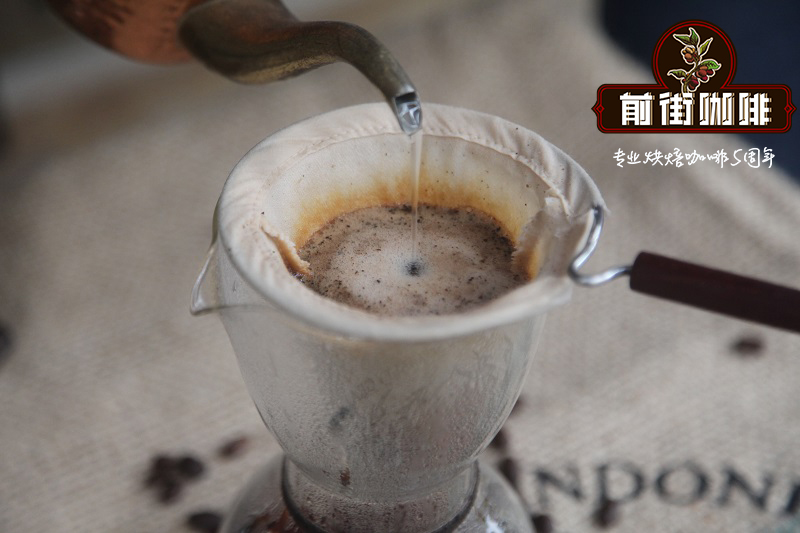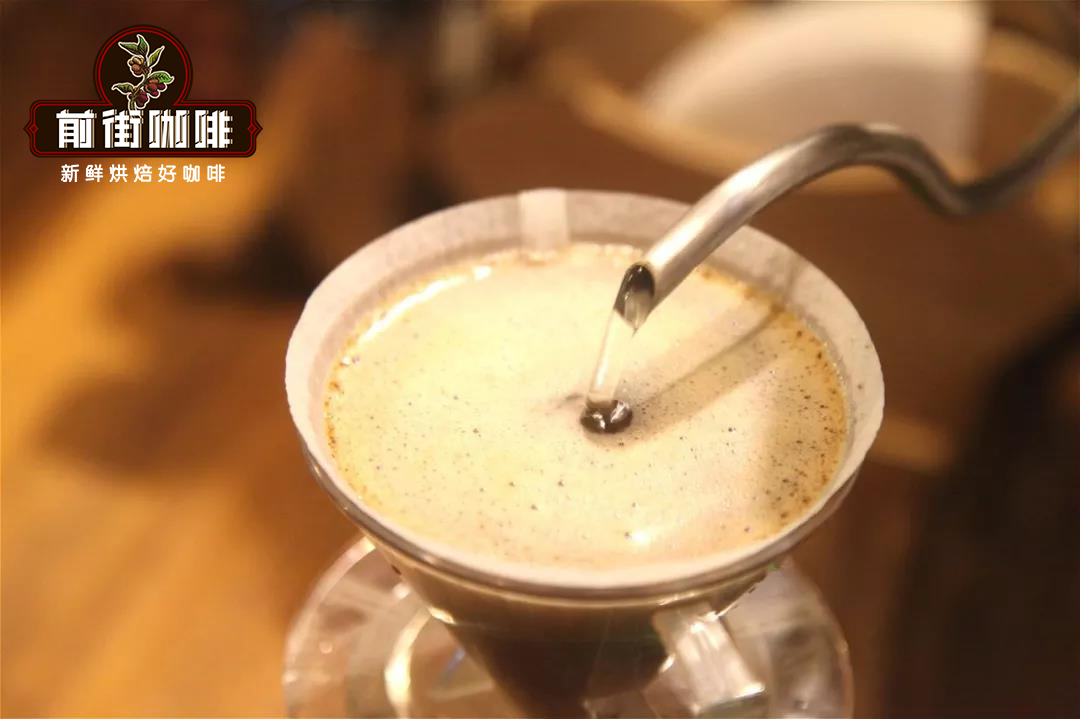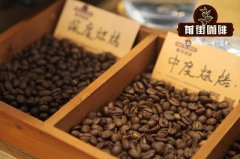Flavor characteristics of Gayo Mantenin Coffee beans from Indonesia Coffee producing area Organic G1 twice hand-selected Coffee

Professional coffee knowledge exchange more coffee bean information please follow the coffee workshop (Wechat official account cafe_style)
In the mid-17th century, coffee trees were introduced to Indonesia by the Dutch (some official sources believe that earlier). The first batch of coffee from Java was sold to Amsterdam in 1712. Indonesia exported 300000 tons last year, making it the fourth largest coffee producer in the world. About 75000 tons are Arabica coffee.
90% of these coffees are grown by sharecroppers on one hectare or less. Indonesian coffee tastes special for a variety of reasons. The most important effects are soil type, height, coffee variety, treatment method and aging method. This combination of natural and human factors creates a unique "terroir" * explanation for each type of coffee.
Indonesian coffee is very diverse in quality, most of which are based on the island origin as its market name: such as Sumatra, Sulawesi, Jawa or Timur. The advantage of Indonesian coffee is that most coffee is characterized by strong, introverted flavor and lively acidity. The disadvantage is that it may also be more uncomfortable and difficult or a little mildew. Others show a rustic nature, which is liked by some coffee lovers, while others will hate it.
Java Jawa:
Java occupies an extremely important position in the history of coffee.
Unlike most other Indonesian coffee grown on small farms for initial processing, Java Arabica coffee is grown on large farms or plantations, mostly run by the government and washed in modern ways. Java produces exquisite aromatic coffee with relatively low acidity, delicate taste and good balance.
Sulawesi Sulawesi:
Sulawesi, formerly known as Celebes, is one of the oldest islands in the archipelago, with exposed rocks for more than a million years. Soils like yellowish-red ash are found in coffee-producing areas. These soils often have several layers of clay beneath the surface, which are rich in iron. The most famous producing area is in the high mountains of Toraja, which is located in South Sulawesi. Kalosi, to the south of Tonaga, is the major metropolis in the region. It is also the most commonly used name of this place as the representative of Sulawesi coffee. It is famous for its full consistency, rich flavor and low acidity.
* Kalosi: the market name for coffee from southwestern Sulawesi.
* Toraja: a growing area in the highlands of southeastern Sulawesi.
Sumatra, Sumatra province:
Sumatra coffee is very complex and elusive.
The best coffee in Sumatra comes from two places: the area near Lake Tawar in Aceh, north of Sumatra, and the mountains that surround Lake Toba in the south. Due to many sharecropper producers and the use of their unique semi-washing treatment and lack of iron in the soil, coffee beans in this area have a special blue color at the stage of fresh beans.
* Mandheling:
It was once praised as the fullest coffee bean in the world.
Manning is a trademark used to produce coffee from Arabica coffee in North Sumatra and coffee produced by the Manning Mandailing in the Tapanuli region of northwest Sumatra.
* Lin Dong (Lintong):
Manning Lindong, the most famous coffee from Lake Toba on the island of North Sumatra.
* Gayo:
In Aceh province, north of Sumatra, Gayo coffee is grown on slopes around the town of Takegon and Lake Tawar.
The average height in the production area is between 1110 and 1300 meters, and the coffee is planted by shade farmers under shade trees. the wet-processed coffee is cleaner, but usually not as flavor as Sumatran coffee. The coffee processed by traditional technology is similar to the coffee in Manning area of Sumatra. The advantage is the peculiar flavor and low and lively viscosity. Aceh, the northernmost corner of Sumatra, is a fascinating and complex place. Aceh is not an area that ordinary people will visit because of its long-standing political instability.
The Gayo are hardworking people with a firm personality, and nearly 20% of coffee processors are women.
Timor Island (Timur): divided into East Timor and West Timor, originated in the early 20th century, East Timor has not used chemicals or chemicals in the past 25 years, should be the world's largest producer of organic coffee, but because the political situation in East Timor is not very stable, it is difficult to export, most of the beans available are from West Timor. Civet Coffee (Luwak): Coffee from Sumatra, Indonesia, is not famous for its source, but for its unique processing mode with a unique new treatment. A mammal called the civet, after eating ripe coffee berries, its digestive tract erodes the outer layer of the coffee cherry fruit, digests and then excretes the seeds, picking out coffee beans from the feces. These discharged coffee beans will be washed and screened. This kind of coffee is one of the rare coffee in the world because of its low yield and its rarity and special taste. It is also one of the most expensive coffee. Now some companies simply create a product called "Kopi Luwak". Is through the artificial feeding of coffee cherry fruit to the civet. Soil types: in Aceh, Bali, Papua and Flores
The soil of the highlands is mainly Andosols, and the rules of word formation come from the Japanese words "an" (black) and "do" (soil).
These fresh soils come from volcanic soil and are highly fertile and contain important micronutrients.
In Arabica coffee in the Java and Lintong regions, the soil is a combination of Andosols and Umbrisols. Umbrisols is a kind of weathered volcanic soil mixed with a considerable amount of organic materials like brown ash.
How to deal with the harvest:
Whether small sharecroppers or on medium-sized estates, all Arabica coffee is picked by hand in Indonesia. Because coffee cherries are all immature at the same time, farmers harvest every 10 days for five to six months.
They only pick red, ripe cherries to show the best quality, aroma and taste. When mechanically harvested coffee, underripe cherries will reduce the aroma of the coffee and have a rougher taste.
After harvest, these special coffees are processed in a variety of ways, and the final coffee product will have its own unique taste and aroma.
Generally speaking, these features can improve the quality of coffee. However, poor or uneven treatment can lead to the loss of flavor and turbidity of coffee.
The main three processing methods are 1. Dry 2. Peel in wet (semi-washed) 3. Water washing
Most small farmers in Sulawesi, Sumatra, Flores and papua have a unique process of handling coffee, which is called giling basah in Indonesia and translated as Wet Grinding.
In this technique, the farmer uses a machine to remove the cherry shell. There is still a lot of slime on the coffee beans and then stored for about a day. During this period, the mucus will be washed away. By this time the coffee is partially dry and can be sold (about 30% to 35% humidity).
In this semi-wet state, the shell of the coffee is removed, giving the beans a unique dark blue. This treatment reduces the acidity and increases the body alcohol thickness of the coffee, resulting in this classic Indonesian coffee.
This kind of bucket is used for the sale of raw coffee beans in Indonesia.
"altitude:
All Indonesian Arabica coffee areas are within the height range most suitable for Arabica coffee, between 1000 and 1800 meters. Usually, the higher the coffee is planted, the slower it grows and the less it produces, and the fuller beans will have more flavor.
Wamena area of Papua: 1400 to 2000 meters
Moanemani region of Papua: 1400 to 1700 m central Flores: 1200 to 1700 Toraja area of Sulawesi: 1000 to 1700 m Kintamani area of Bali (Bali): 1000 to 1500 m Ijen plateau in East Java: 1300 to 1500 m Lindong (Lintong) region of Sumatra: 1 200 to 1 500 m Aceh area of Sumatra: 1 110 to 1 300 m
Breed of rice:
There are more than 20 varieties of Arabica coffee in circulation in the Indonesian commercial market. There are six main categories.
The best known is Typica, an original breed introduced by the Dutch. When Indonesian coffee suffered from leaf spot disease, many Typica species disappeared in the late 1880s. However, two local Typica varieties, Bergandal and Sidikalang, can still be found in Sumatra, Sulawesi and Flores, especially in high altitude and remote areas.
After the coffee beans have been screened for particle size, some producers will store the coffee for one to three years before selling it. This process will give the coffee a very mild and warm nature, with woody and cinnamon aromas. Fresh beans will slowly change color from dark yellow to brown.
* explanation 1: "terroir" originally means "land, native land" in French. There is an old Chinese saying that "one side of the soil and water raises the other". In this sentence, "one side" refers to the soil and water of a certain area, including geographical location, climate and environment. "one person" is the person who has lived in this area for a long time. People in different regions will naturally have different cultural characteristics due to different environments, different ways of life, different geography and climate, different ideas, different human history, and different ways of life. This sentence actually fully explains the concept of Terroir.
Terroir is a combination of the above factors. "Terroir" refers to the subtle environmental factors that make up the "personality" of coffee. For example, the example of parents, the temperament and accomplishment of neighbors, and the surrounding regional environment have a great impact on people.
Coffee trees are also influenced by various factors such as soil quality, topography, elevation, drainage, weather, and even local traditions, and their performance is completely different. At this point, the different appearance of the same coffee varieties grown in the same way in different regions can easily be mentioned as the difference of "terroir" covering soil, topography, and climate. There is no excuse and irreplaceable, because this is the only region in the world.
Indonesia is a large archipelago country composed of many volcanic islands, which inherently has excellent coffee growing environment and latitude, and each island has different characteristics because of its different topography and climate. The islands where coffee is grown in Indonesia are: Sumatra of Sumatra, Sulawesi of Sulawesi, Java of Java, Sumbawa of Sumbawa, Flores of Flores and Papua of Papua Province. Among them, Sumatra is the main coffee growing place in Indonesia, and the most famous Mantenin coffee comes from here. Sumatra is divided into two producing areas: the first is Aceh in Aceh in North Sumatra and the second is Linton in Lake Dorba in the south-central part of the country. The most famous planting area in Aceh is the Gayo Mountains, which surrounds Lake Tawa, and is the main producing area of Mantenin, at an altitude of 1100-1300 meters. Mantenin refers to Arabica coffee in northern Sumatra, which derives its name from the local Manning people. Lindong is located in the southwest of the largest lake in Sumatra: Tobahu, which is an important source of boutique coffee in Indonesia. Java, the first island in Indonesia to grow coffee beans, was introduced by the Dutch East India Company in about the 16th century. Sulawesi Island is the producing area of another famous Indonesian coffee "Toraga", which is located in the southern mountains of the equatorial island of Sulawesi. Arabica raw beans were brought about by the early Dutch colonization, and at that time it was famous as Celebes Kalossi (Selbis-Carosi). Later, the Japanese entered Toraga to improve the local industry and quality of coffee, and made Tolaga famous in Asia. Indonesian coffee beans are mainly treated by semi-washing, which is classified by the proportion of defective beans and the number of hand selection of defective beans.
Gayo Mantenin Organic G1 twice hand-selected DP Gayo Mandheling G1 DP Organic Certified
■ country: Indonesia
■ producing area: Jiayu, Aceh
■ treatment: semi-washing
■ above sea level: 1100mi 1300m
■ variety: Arabica
■ flavor description: thick and thick Body, milk chocolate, nuts, raisins, good balance
Around the scenic Jiayu area of Lake Lake Tawar, with an average annual rainfall of average 2200mm and an excellent average altitude, the coffee growing area is located at about 1,100m, 1400m, and volcanic soil that helps to grow coffee. Coffee planting is usually carried out by independent small farmers in this area, and coffee quality is improved by shading trees. Different from the other boutique coffee producing areas in Indonesia, Mantenin produced by Lin Dong in the southwest of Lake Dorba, the coffee in Jiayu area has a more calm and introverted character, usually with a very thick taste and rich chocolate fruit flavor.
Qianjie Coffee is recommended to brew manning with 86-88 degrees of water and, if possible, use a kono filter cup to increase the mellow taste.
The palate is filled with flavors of herbs, spices, chocolate and caramel.
Important Notice :
前街咖啡 FrontStreet Coffee has moved to new addredd:
FrontStreet Coffee Address: 315,Donghua East Road,GuangZhou
Tel:020 38364473
- Prev

Introduction to the story of Brawan Manor in Blawan, Indonesia _ cultivation of Java coffee beans in Indonesia
For more information on coffee beans, please follow the coffee workshop (Wechat official account cafe_style) Indonesia coffee producing area-Java produces delicate aromatic coffee with relatively low acidity, delicate taste and good balance. Java coffee has better aroma and acidity than coffee from Sumatra and Sulawesi. The best plantation in Java is Blawan.
- Next

Flavor description of imported Mantenin Light Coffee from Indonesia _ relationship between Manning Light and Manstar Coffee
Professional coffee knowledge exchange more coffee bean information please follow the coffee workshop (Wechat official account cafe_style) the light of Manning Mandehling Sinar the original herbal light is sold out, secretly tell you, now the light of Manning is called Man Star. The light of Mantenin, from Indonesia, is found in the volcanic lakes of the Lindongdo Lake District in Sumatra.
Related
- Detailed explanation of Jadeite planting Land in Panamanian Jadeite Manor introduction to the grading system of Jadeite competitive bidding, Red bid, Green bid and Rose Summer
- Story of Coffee planting in Brenka region of Costa Rica Stonehenge Manor anaerobic heavy honey treatment of flavor mouth
- What's on the barrel of Blue Mountain Coffee beans?
- Can American coffee also pull flowers? How to use hot American style to pull out a good-looking pattern?
- Can you make a cold extract with coffee beans? What is the right proportion for cold-extracted coffee formula?
- Indonesian PWN Gold Mandrine Coffee Origin Features Flavor How to Chong? Mandolin coffee is American.
- A brief introduction to the flavor characteristics of Brazilian yellow bourbon coffee beans
- What is the effect of different water quality on the flavor of cold-extracted coffee? What kind of water is best for brewing coffee?
- Why do you think of Rose Summer whenever you mention Panamanian coffee?
- Introduction to the characteristics of authentic blue mountain coffee bean producing areas? What is the CIB Coffee Authority in Jamaica?

